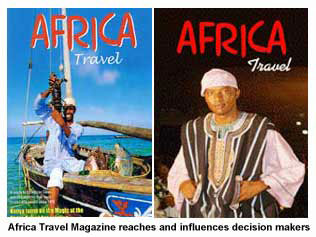
|
|
|
Department for International
Development (UK) Related pages:
Uganda country profile | MDG 8: Aid, trade, growth
and global partnerships Building on lessons
learnt in a pilot project in the West Nile region
of northern Uganda, in February 2006 DFID Uganda
signed a £1.1m accountable grant with the
international NGO, CARE, to work with a network of
local implementing agencies to establish Village
Savings and Loan Associations in over 30 districts
in Uganda. A year later, the
programme is now reaching almost 50,000
households. Reducing the cost
of financial services In remote rural
areas, the costs of providing financial services
increase, due to poor infrastructure and lower
population density. At the same time, the income
that Microfinance Institutions (MFIs) can expect to
earn from each client decreases, because poorer
people in rural areas only save and borrow very
small amounts. This means that
many MFIs remain focused on serving urban or
peri-urban areas, where they are able to operate
profitably. Also, many MFIs remain focused on the
delivery of micro-credit and encourage clients to
take out larger and larger loans. By contrast, VSLA
operating costs are very low. Because they are
member-managed, they have no professional staff
salaries or head office overheads to cover and all
profits earned by the association are retained by
the group. Being member-financed, they are also
savings-led and avoid the risk of loading poor
people down with debts they are unable to
repay. • The
Financial Sector Deepening Uganda (FSDU)
project • Microfinance
Gateway • CARE Uganda
country profile Managing wealth
collectively The Chwanzo Women's
group in Kasese District, Western Uganda has 30
members. It meets under the same tree every
Wednesday. Group members have received training and
guidance from a Community based trainer funded by a
local NGO. Now they are able to manage the VSLA
group by themselves. All members save
every week. The minimum saving amount, set by the
group, is 500 shillings (approx 16 pence) per week.
After a few months of building savings, the group
is able to begin to make loans of one to three
months to the members. Loan sizes for this group
range from 20,000 to 60,000 Ugandan shillings
(£6-18). Those applying to borrow are
questioned by other group members to judge whether
they are investing wisely. All the funds are
kept in a lock-box with three padlocks. The keys
are held by three different members, and one of the
ground rules is that the box is only opened when
there are at least fifteen members present. In
addition, each group has designated money counters,
who guarantee a high level of transparency around
transactions. The interest rates
that the members pay on loans are set by the group.
Rates as high as 10% per month are not uncommon.
These high rates are tolerated because members as
savers benefit from the high returns earned on
their savings. Groups also frequently have a
welfare fund that the members contribute to; this
is used to cope with shocks such as deaths and
illness. The fund is effectively a self-insurance
scheme. For more
information, contact DFID Uganda's enterprise
development adviser Back to
top Key
facts • This is one
project among several being supported through DFID
Uganda's £7m Financial Sector Deepening
Programme, aimed at improving poor people's access
to a range of financial services including secure
savings and affordable credit. The FSDU project is
now entering its fifth and final year and is due to
end in December 2007 • Working with
CARE, the FSDU VSLA programme is providing training
and support through 14 local partners to over 4000
VSLAs. The target is to reach 100,000 households by
the end of 2007 • One of the
strengths of the VSLA methodology is that it
creates strong and cohesive and mutually dependent
groups. These groups can then act a channel through
which other training is delivered on issues such as
women's rights, empowerment, and health issues such
as HIV/AIDS. The Chwanzo Women's group is also an
adult literacy class. • Impact
assessment studies have noted that VSLAs enable
members, typically women, to better manage
household cashflows and in particular save for
school fees, assets (such as pots, pans, livestock)
and meet the cost of emergency health care. They
also enable members to access sums for investment
in a variety of income generating activities,
including petty trading, farming, and beer
brewing. http://www.dfid.gov.uk/ |
||||



 Bringing
financial services to Uganda's
villagers
Bringing
financial services to Uganda's
villagers